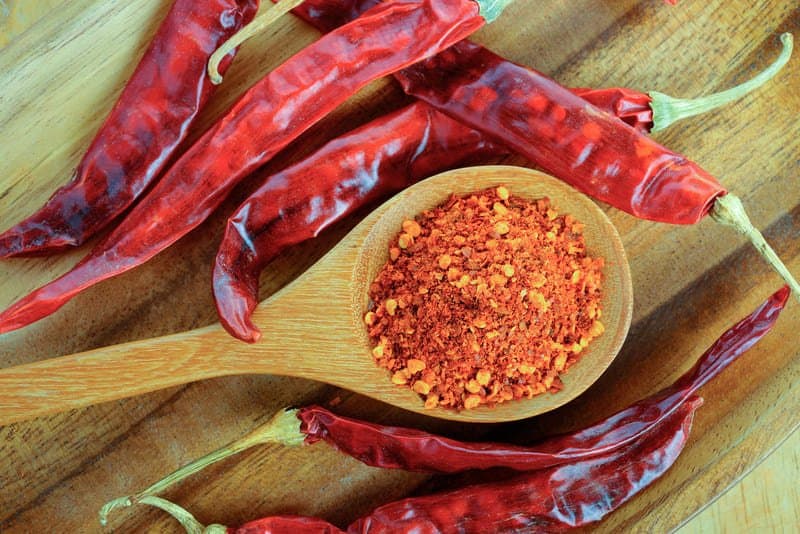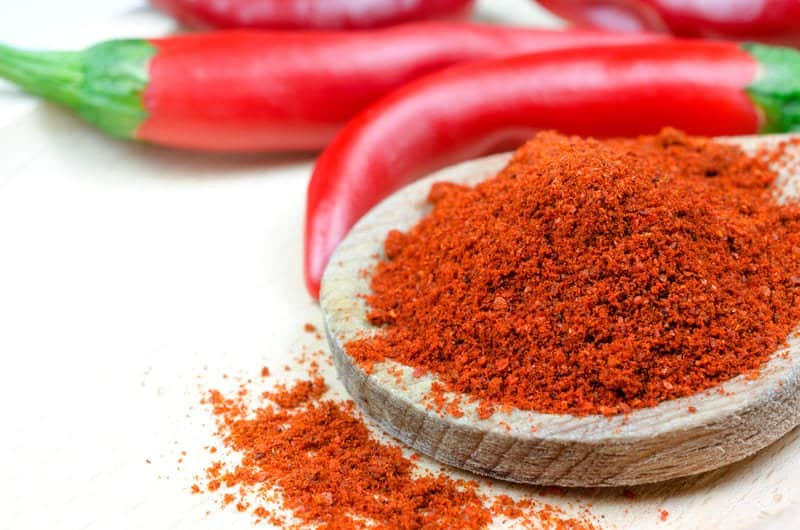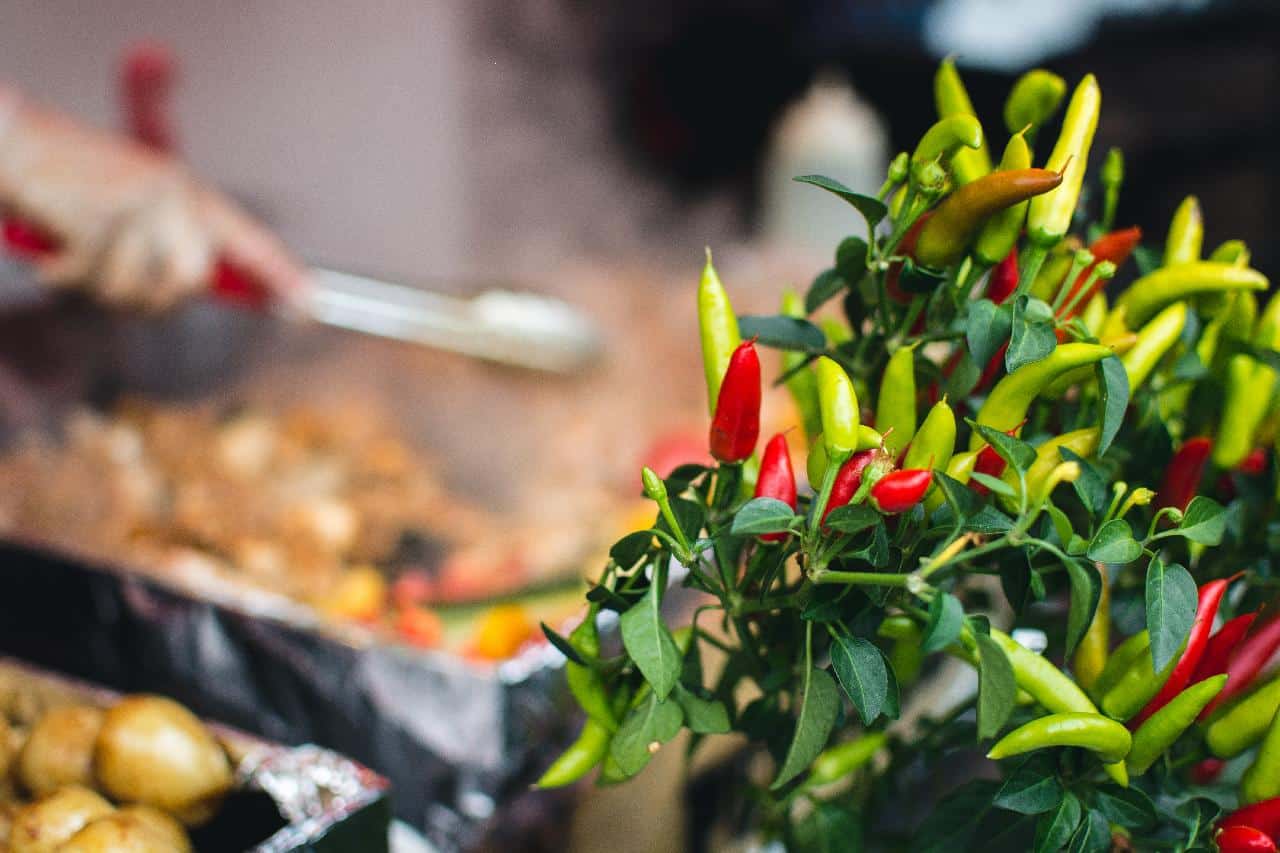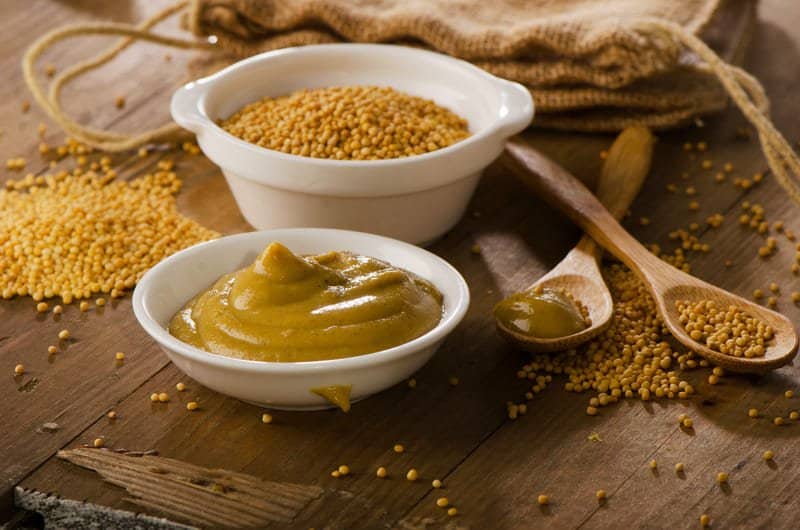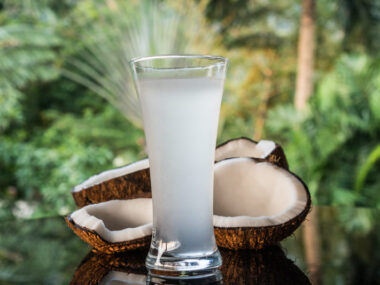A widely famous spice, the cayenne pepper, commonly called the king of the spices, with its’ “bite from hell” is today one of the spices that modern or traditional worldwide cuisine simply does not work without.
What are the best substitutes for cayenne pepper? We will recommend you several common (or less common) ingredients you can successfully use as the substitute for the cayenne pepper like black pepper, red pepper powder, Tabasco, ginger, and mustard.
Cayenne Pepper Substitutes
Before you reach for any of the available substitutes, you should, of course, take into consideration the final goals and that is what will it do to your dish, it’s flavor and structure, will it change the meal entirely or just the spice tone of it? Here are a few suggestions on how to successfully replace the cayenne pepper:
1. Black Pepper
Black pepper comes from a completely different family of hot spices and remains one of the most common spices in every amateur or professional kitchen.
This perennial evergreen and climbing sort of plant originally come from Asia and part of southern India. The particularity of this plant is that it grows in the shape of a vineyard and can reach an unbelievable height of more than 10 meters.
The tin berries coming from this plant, in colorful variations, black, green, white, or red, are considered the oldest spice is known to humanity dating back as far as Roman times.
It will not give the dish the reddish coloration typical for cayenne; however, will give a great and enriched taste.
The dosage of black pepper (or any of its variations) is again entirely up to an individual taste, with the hint from the professionals; for optimum results and taste, use it always freshly grounded.
2. Red pepper powder
Just an ordinary red pepper powder can be a pretty good substitute for cayenne pepper, especially if you are in search of a milder version of it.
It will do well for the colorations of your meal, while the dosage is entirely up to your own taste. Follow the recipe instructions and if you wish stronger just add more, less for the milder version.
One of the disadvantages of the pure red pepper powder is that if overdosed it can change the entire flavor of the dish and lean towards the strong pepper taste killing all other essential segments of the dish.
3. Tabasco
Yet another good substitute for cayenne pepper, used for anything and everything from salads, starters, main dishes, and desserts.
This distinguished hot sauce with the base of grounded chili peppers and vinegar is one of the rare with a really extraordinary and unique way of production.
The only plant in the world producing this unique sauce is on Avery Island, in the state of Louisiana, US, while the sauce itself exports to more than 160 countries of the world.
Even though, thanks to its popularity the sauce can be found in any kitchen and practically on any restaurant table worldwide, the advice for use is just the same as with other similar products – it really depends on how much hotness and spice your own taste can bear.
Additional advice on usage of Tabasco is to be particularly careful with dosage due to its vinegar component. A little of it can just improve the taste of the meal in general, too much of it may lead to a sour texture and flavor.
4. Mustard
Surprisingly, one of the great choices to add flavor and spice to your meal is to use mustard.
This particular ingredient is produced from unpeeled mustard seeds for the mild ones and from peeled seeds for the strong and spicy ones. They can be found in several versions with the most popular being Dijon, French, English, and American.
The mustard has its characteristic and recognizable taste and will certainly make each dish innovative and far from boring. Try to mix it with the mayonnaise; it is known that mustard and mayo are best friends.
Adding it to the marinades for meat, in sauces, salad dressings, stews, for glazing purposes, the possibilities are endless.
Just like with any other spice, the dosage is to be according to the recipe, while you can always add a bit more or less, depending on your own taste and imagination.
5. Ginger
This unique and sophisticated spice is becoming more and more popular, not only in gastronomy but also in medicine.
In addition to being rich in numerous minerals and vitamins, this extraordinary tuber with a distinctive spicy taste is rich in gingerol, the main factor for digestion stimulation.
Ginger has a really unique taste being spicy and sweet at the same time. It is best used in preparations of any protein-rich dishes such as chicken, pork, and beef. For an even stronger taste and effect on your dish, ginger goes well mixed with garlic.
In any case, the addition of ginger to your dish should be dosed carefully with the main aim to improve the richness of the dish prepared.
Some Interesting facts about Cayenne Pepper
The cayenne pepper (lat.Capsicum Annuum) is a spice derived from a plant cayenne pepper, and its bright red fruit grounded to the fine powder. According to the Scovill’s scale, the ripe peppers belong to the moderately strong spices.
The plant is being cultivated across the globe, however, mostly on the territories of India, Mexico, and East Asia, where it also became one of the bases of the traditional cuisine in those parts of the world, and even became the synonym for their national cuisine.
The popularity of the cayenne pepper is widespread, the fruit can be eaten fresh or cooked, however, the most common culinary use is the powder or oil.
To use the cayenne pepper is to use your imagination; it will go perfectly as an unavoidable spice in traditional international dishes, with the addition on absolutely any both salty and sweet dishes, from chili con carne to just simple steak, egg scrums, and all the way to chocolate and ice cream.
Yet, each of these dishes can successfully be enriched with alternative ingredients and substitutes for the cayenne pepper.
There are still a lot of people who can make absolutely no distinction, and for them, the dish is either spicy or it is not spicy.
However, it cannot be farther from the truth. With just a little switch of spices, you can achieve a lot of difference having your food still very tasty and giving you even more health served on your plate.
The little experiments can only help to discover new tastes and add a brand new dimension to the old ones.
How to choose the best substitute for cayenne pepper?
Hot is hot, the spice is a spice, right? No. No matter how simple it seems, in reality, it is not, some basic knowledge of the hot spices is required to reach the maximum flavor.
In cases when you do not wish to chose the cayenne pepper for whatever reason, pay attention to the substitute you will use. It can easily be one of the spices we recommended in this article, or just anything else coming from the family of hot spices.
The first and the basic rule is to make sure how much of a spice you want to have added to the dish with special attention paid to what the spice is going to do the dish, will it change significantly its form, taste, texture, etc.
Choosing correctly will make you the star in the kitchen and definitely ad to the explosion of flavors to what you are cooking.
Can I substitute red pepper flakes for cayenne pepper?
You absolutely can. As a matter of fact, it is practically still the same spice of a specific variety and just of a somewhat milder taste and strength.
Red pepper flake usually does and may consist of several different types of red peppers and very often include the dried seeds too.
If you chose to substitute the cayenne pepper in the recipe with the red pepper flakes the recommended dosage is to use a larger amount of red pepper flakes than you would do with the cayenne.
Conclusion
The cayenne pepper, the king of all hot spices is an endless source of inspiration in kitchens across the world ever since it was first grown and used.
The capsaicin, the main ingredient of the cayenne pepper, is an excellent ally proven to be a health improvement natural ingredient working effectively with the blood pressure issues, lowers the risk of cancer development, as well as an ally in dieting as an effective appetite reducer.
It only proves that whatever the purpose is, it does not go without cayenne pepper. To end up with, one more piece of advice; be careful using it – it takes some time for our taste receptors to get used to its hotness.
When you start using it, start gradually and you can always add more when necessary. The same advice goes for the list of our recommended substitute ingredients; black pepper, red pepper powder, Tabasco, mustard, or ginger.
Be creative and original and enjoy the endless possibilities of this tasty and spicy ingredient!
